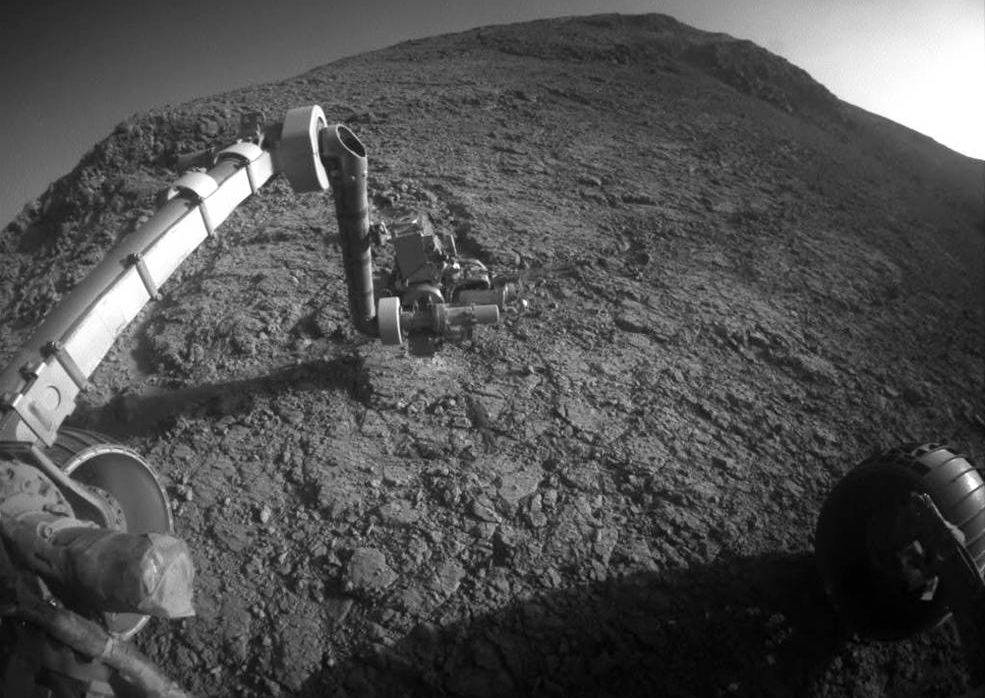
You can't win 'em all. Such is the case with the Curiosity rover, anyway, as diagnostics have revealed that its wind sensors have sustained damage. NASA engineers aren't fully sure what caused this minor setback to the otherwise successful landing, but hypothesize that stones might've been kicked up during the rocket-powered landing, which then struck the sensor's wiring. Fortunately, there's already someone on the job, as Javier Gomez-Elvira is investigating the damage with the intent of restoring the lost functionality. Another NASA scientist, Ashwin Vasavada, believes the issue is rather minor: "It degrades our ability to detect wind speed and direction when the wind is blowing from a particular direction, but we think we can work around that."
The broken instrument was initially discovered as part of NASA's routine power-cycling of all instrumentation, so as to determine an overall bill of health for the rover. Now that Curiosity has earned its battle scars, it can hold its head high during its journey to Glenelg and Mount Sharp.
Filed under: Science
Curiosity rover flaunts its battle scar, wind sensor is bruised (but not broken) originally appeared on Engadget on Tue, 21 Aug 2012 19:59:00 EDT. Please see our terms for use of feeds.
Permalink |
 BBC
BBC |
Email this |
Comments
 Today on In Case You Missed It: A new rover concept from Harvard's SSR Lab shows a rover extruding a fast-drying foam over rocks to keep vehicles from getting stuck on other planets. University of Nottingham researchers are building an algorithm...
Today on In Case You Missed It: A new rover concept from Harvard's SSR Lab shows a rover extruding a fast-drying foam over rocks to keep vehicles from getting stuck on other planets. University of Nottingham researchers are building an algorithm...
 Today on In Case You Missed It: A new rover concept from Harvard's SSR Lab shows a rover extruding a fast-drying foam over rocks to keep vehicles from getting stuck on other planets. University of Nottingham researchers are building an algorithm...
Today on In Case You Missed It: A new rover concept from Harvard's SSR Lab shows a rover extruding a fast-drying foam over rocks to keep vehicles from getting stuck on other planets. University of Nottingham researchers are building an algorithm...
 When the Opportunity made its Mars landing on January 24th, 2004, NASA believed the rover would only last about 90 days, due to the Red Planet's dusty nature. But, thanks to unexpected winds which kept Opportunity's solar panels clean, that obviously...
When the Opportunity made its Mars landing on January 24th, 2004, NASA believed the rover would only last about 90 days, due to the Red Planet's dusty nature. But, thanks to unexpected winds which kept Opportunity's solar panels clean, that obviously...
 In its trek around the surface of the Red Planet, the Curiosity rover reached the sand dunes it already ogled from afar. While that may not sound all that exciting, these images the vehicle captured along its journey provide the first detailed look a...
In its trek around the surface of the Red Planet, the Curiosity rover reached the sand dunes it already ogled from afar. While that may not sound all that exciting, these images the vehicle captured along its journey provide the first detailed look a...








